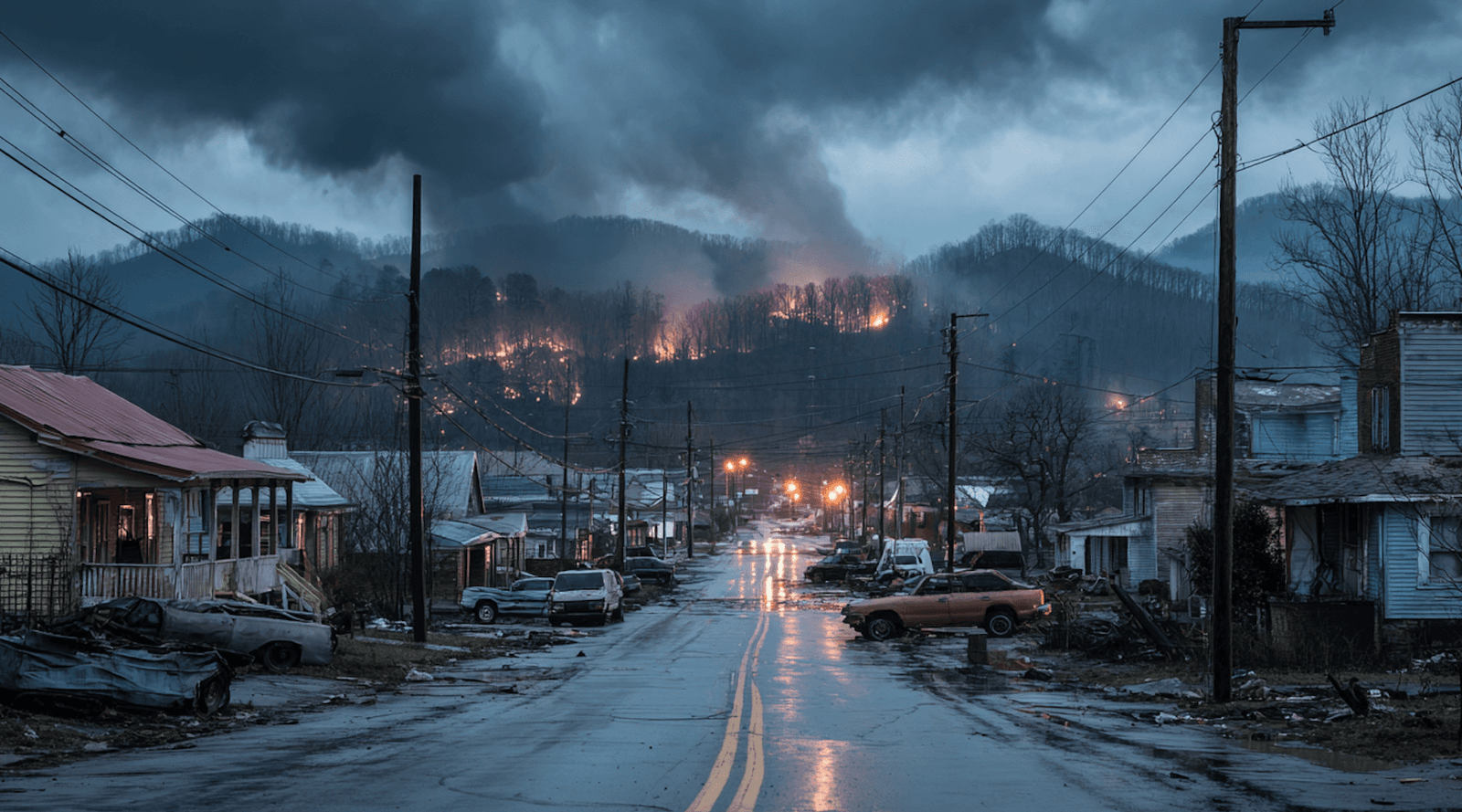
Rebecca Kiger. June 30, 2014. Parkersburg, Wood County, West Virginia.
There's no other way to say it. Since its creation in 1965, the Appalachian Regional Commission (ARC) has literally transformed our region. Using federal dollars to draw support from every sector—state and municipalities, major corporations, and local investors—it's created this dramatic multiplier effect and supercharged more than 25,000 projects.
To save this graphic, left click on your desktop.
On mobile devices, hold your finger on the image.
You can then share it with friends.
From high speed internet to job training to local foods to education to tourism to healthcare, the ARC has quietly supported every imaginable Appalachian sector. I say quietly because the commission doesn't post signs with its name at project sites or publicize its work. Which means, in Appalachia, the ARC is arguably the most powerful institution no one knows.
That's fine until the sitting U.S. President introduces a radical budget that strips the ARC of all funding. You read right. In his "Budget Blueprint to Make America Great Again," President Trump allocated $0 to the ARC. This was in spite of the overwhelming support he found in rural parts of the region. (Election results in Appalachian cities were more mixed, but that's a topic for another day.)
Regardless of who won our presidential votes or where we fall on the political spectrum, we all know that parts of Appalachia are still in crisis. The economic underpinnings of coal country have collapsed. Even coal executives say it will never be the same, and this job crisis has led to a health crisis. Just look at drug abuse, diabetes, and obesity rates. They're all off the charts in Appalachia's struggling areas.
But we can turn things around. We're doing it in eastern Tennessee and western North Carolina, in Greenville and Roanoke, in the eastern panhandle of West Virginia, and in the Shenandoah Valley. To extend this economic revival west, we must fire on all cylinders. That includes federal support.
If you want to see every part of Appalachia thrive, please share the above graphic along with the hashtag #SaveARCgov. Still need convincing? Here are five reasons to save the Appalachian Regional Commission.
1) ARC is a lightning rod for private funds.
The federal government has invested $3.8 billion in Appalachia outside of highway projects. (Oh yeah, the ARC basically built the highway system that connected isolated mountain communities to the rest of the nation.) That $3.8 billion has leveraged another $16 billion in private funds. You'd be hard pressed to find a stronger driver of private investment in the region. The ratio between federal money and private money has actually grown over the years. In 2013, every federal dollar was matched by nearly $15 in leveraged private investments (LPI's below) plus additional dollars from other public sources like states, cities, and towns.
2) ARC could help end concentrated Appalachian poverty.
The number of high-poverty counties in Appalachia (those with poverty rates above 150 percent of the U.S. average) has dropped a staggering 70 percent since 1960. That is a remarkable change in a region that was literally cut off from the rest of the nation until a few decades ago, and nearly every ARC grant has chipped away at poverty in some way. If we maintain this pace, Appalachia could have zero high-poverty counties in another twenty years or so.
3) ARC creates private sector jobs en masse.
The ARC's non- highway projects have led to more than 310,000 new jobs and $10 billion in added earnings in the region. That's almost $3 in earnings for every dollar of federal spending. How's that work? It all comes back to the commission's cross-sector partnerships. They have helped keep Appalachia's unemployment rate on par with the rest of the nation in spite of regional declines in coal and manufacturing jobs.
4) ARC helps educate us.
In 1970, just 7.4 percent of Appalachian people age 25 and older held bachelor's degrees or higher. In the five year period of 2008-2012, that figure stood at 21.3 percent thanks, in large part, to the ARC's concentrated effort to boost graduation rates. This is a big improvement, but education must remain a focus. Appalachia continues to lag behind the national average, and college degrees mean more than ever. According to a study by Georgetown University, 65 percent of all U.S. jobs will require postsecondary education/training by 2020.
5) ARC has saved children's lives.
Back in 1970, 1 in 9 Appalachian households still lacked plumbing. With a focus on basic needs like these, the ARC improved sanitation. It also funded healthcare projects. As a result, lifespans for all ages grew and infant mortality dropped by a dramatic two-thirds. Federal investments literally saved many of our children, but now we're seeing a reversal in trends. Factors like obesity and an aging population are driving overall mortality back up. If the ARC disappears, hundreds of thousands of jobs could be lost or never even created, forcing many young people to leave Appalachia, and with cuts to healthcare programs, the lives of those who remain would literally be on the line.
Graphics from Appalachia Then and Now: Examining Changes to the Appalachian Region since 1965.
















